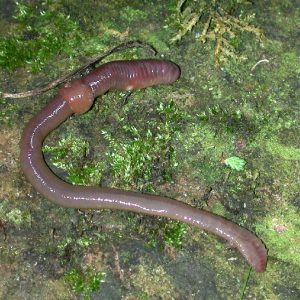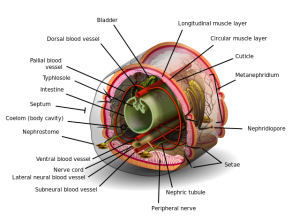Annelida
Scientific name: Annelida
Higher classification: Lophotrochozoa
Kingdom: Animalia
- The annelids, also known as the segmented worms, are a large phylum, with over 22,000 extant species including ragworms, earthworms, and leeches. The species exist in and have adapted to various ecologies – some in marine environments as distinct as tidal zonesand hydrothermal vents, others in fresh water, and yet others in moist terrestrial environments.
 Annelids are coelomate and triploblastic.
Annelids are coelomate and triploblastic.- They exhibit organ system level organization.
- Their body is segmented.
- They respire through their body surface.
- Nephridia are the excretory organs.
- They have a well-developed circulatory and digestive system.
-
In addition to improving soil fertility, annelids serve humans as food and as bait. Scientists observe annelids to monitor the quality of marine and fresh water.
Interesting Facts about Annelids
- Although worms don’t have eyes, they can sense light, especially at their anterior (front end). They move away from light and will become paralyzed if exposed to light for too long (approximately one hour). This is why worms often move to moist or dark areas.
- Worms are hermaphrodites, meaning they have both male and female sexual organs.
- If a worm’s skin and slime dry out, they can eventually die.
- Worms are cold-blooded invertebrates.

- Worms will live in places where it provides enough oxygen, moisture, and a favourable temperature. It must also include the worms’ favourite foods, and hiding places to avoid predators.
- There are over 22,000 living annelid species, ranging in size from microscopic to the Australian giant Gippsland earthworm and Amynthas mekongianus, which can both grow up to 3 meters (9.8 ft) long to the largest annelid, Microchaetus rappi which can grow up to 6.7 m (22 ft).
